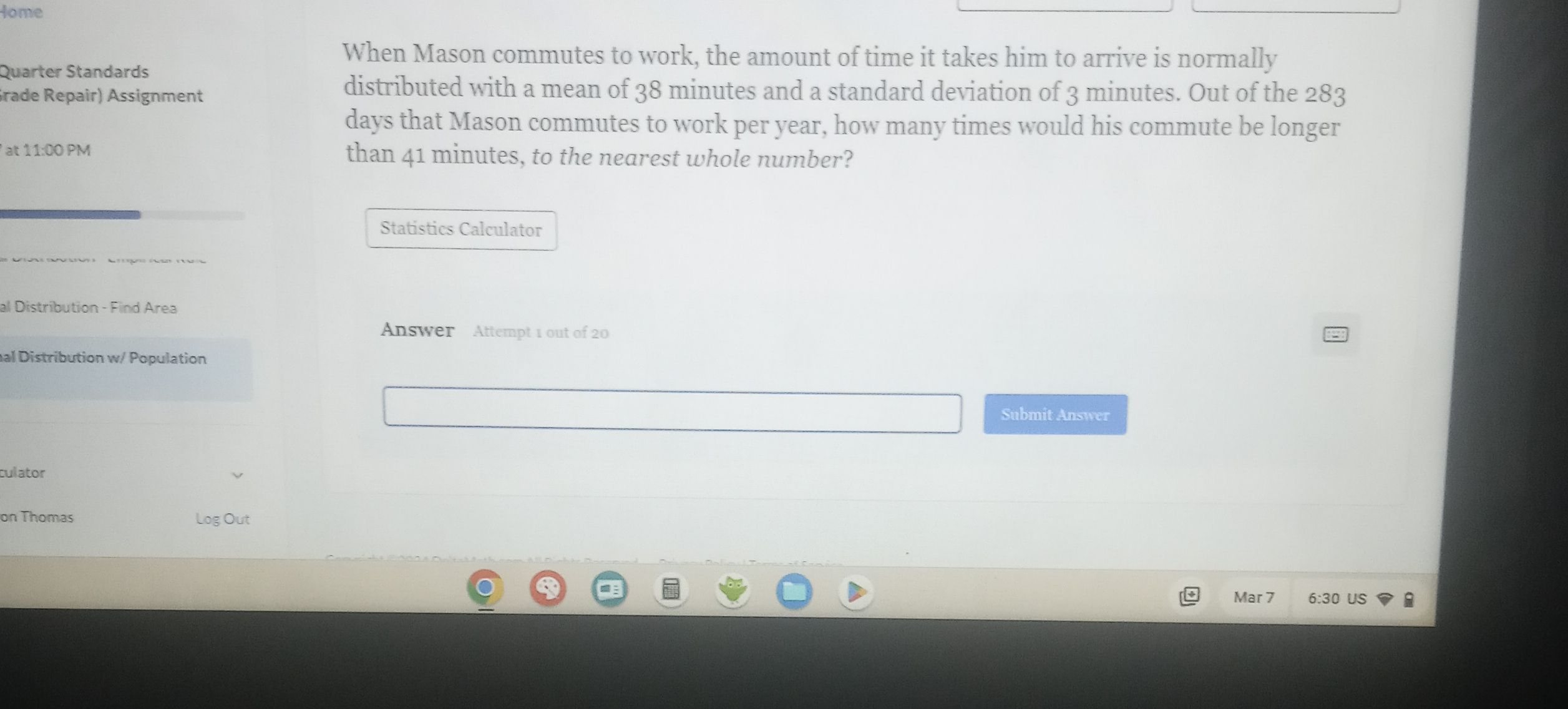AI tutor
Welcome to Bytelearn!
Let’s check out your problem:

When Mason commutes to work, the amount of time it takes him to arrive is normally distributed with a mean of minutes and a standard deviation of minutes. Out of the days that Mason commutes to work per year, how many times would his commute be longer than minutes, to the nearest whole number?
Full solution
Q. When Mason commutes to work, the amount of time it takes him to arrive is normally distributed with a mean of minutes and a standard deviation of minutes. Out of the days that Mason commutes to work per year, how many times would his commute be longer than minutes, to the nearest whole number?
- Identify Information: Identify the given information and what we need to find.Mason's commute time is normally distributed with a mean of minutes and a standard deviation of minutes. We need to find out how many days out of his commute time will be longer than minutes.
- Calculate z-score: Calculate the z-score for the commute time of minutes.The z-score formula is: , where is the value we are comparing to the mean.For Mason's commute time, .
- Find Probability: Use the z-score to find the probability that Mason's commute time is longer than minutes.We look up the z-score of in the standard normal distribution table or use a calculator to find the area to the right of . This area represents the probability that a given day's commute time will exceed minutes.The area to the left of is approximately , so the area to the right (which is what we want) is .
- Calculate Number of Days: Calculate the number of days Mason's commute will be longer than minutes.We multiply the probability by the total number of commuting days.Number of days = .
- Round Result: Round the result to the nearest whole number, as we cannot have a fraction of a day.Mason's commute will be longer than minutes on approximately days out of .
More problems from Interpret confidence intervals for population means
QuestionGet tutor help
QuestionGet tutor help
QuestionGet tutor help
QuestionGet tutor help
QuestionGet tutor help
QuestionGet tutor help
QuestionGet tutor help
